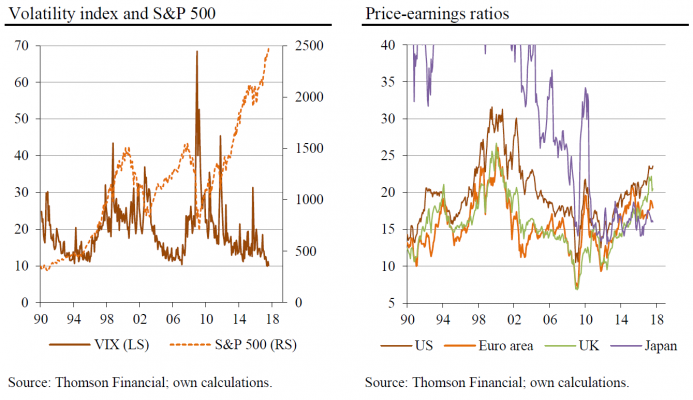By Dr Frank Shostak
Whenever the signs of an economic weakness emerge, most commentators are of the view that the government should relax the fiscal policy stance in order to prevent the economy falling into a recession. In this way of thinking, economic activity is presented in terms of the circular flow of money with the spending by one individual becomes part of the income of another individual. Hence, spending equals income.
If for some reasons individuals have decided to reduce their spending, this is going to weaken the circular flow of money. Once an individual spends less, this undermines the income of other individual, who in turn reduces the purchases of goods from another individual. As a result, the overall spending on goods and services and thus overall income comes under pressure.
Following this logic, in order to prevent a decline in the overall income getting out of hand, it is held that the government should step in and lift its outlays, thereby filling the shortfall in the private sector spending. On this way of thinking an increase in government spending, is the agent of economic growth.
The magic of the Keynesian multiplier
John Maynard Keynes popularized the view that an increase in government outlays causes the economy’s income to increase by a multiple of the initial government increase. The following example illustrates the essence of this way of thinking.
In order to strengthen the pace of economic activity the government decides to increase its expenditure by $100 million. It was also established that out of an additional dollar received individuals spend $0.9 and save $0.1.
Once the increase in government outlays takes place this enlarges the amount of money in individuals’ possession by $100 million. Given that individuals spend $0.9 out of an additional dollar received this means that they are going to spend 90% of the $100 million, i.e. they increase expenditure on goods and services by $90 million.
The recipients of these $90 million in turn spend 90% of the $90 million, i.e., $81 million. Then the recipients of the $81 million spend 90% of this sum, which is $72.9 million and so on. Note that the key in this way of thinking is that expenditure by one person becomes the income of another person.
At each stage in the spending chain, individuals spend 90% of the additional income they receive. This process eventually ends, with total income higher by $1 billion (10*$100 million) than it was before government had increased its expenditure by $100 million. The multiplier here is 10. Observe that the more is spend from the additional income the greater the multiplier is going to be and therefore the impact of the initial spending on the overall income is going to be larger.
For instance, if individuals change their habits and spend 95% from each dollar the multiplier is going to become 20. Conversely, if they decide to spend only 80% and save 20% then the multiplier is going to decline to 5. This means that the less individuals save the larger the impact of an increase in demand on overall income is going to be. According to John Maynard Keynes,
If the Treasury were to fill old bottles with banknotes, bury them at suitable depths in disused coal mines which are then filled up to the surface with town rubbish, and leave it to private enterprise on well-tried principles of laissez-faire to dig the notes up again (the right to do so being obtained, of course by tendering for leases of the note-bearing territory), there need be no more unemployment and with the help of the repercussions, the real income of the community, and its capital wealth also, would probably become a good deal greater than it actually is.
Fiscal stimulus and economic growth
Since government is not a wealth generating entity, how can an increase in government outlays revive the economy? Various individuals employed by the government expect compensation for their work.
Note that the government can pay these individuals by taxing others who are still generating wealth. By doing this, the government is going to weaken the wealth-generating process and undermine prospects for economic growth. The following example clarifies this point further.
In an economy, which is comprised of a baker, a shoemaker and a tomato grower, another individual enters the scene. This individual is an enforcer who is exercising his demand for goods by means of a force.
The baker, the shoemaker and the farmer are forced to part with their products in an exchange for nothing. As a result, all other things being equal, their ability and willingness to produce goods weakens. This in turn undermines the production flow of final consumer goods.
According to Mises,
…there is need to emphasize the truism that a government can spend or invest only what it takes away from its citizens and that its additional spending and investment curtails the citizens’ spending and investment to the full extent of its quantity.
Now, fiscal stimulus can “work” as long as the flow of savings is expanding. The expanding flow funds government activities whilst still permitting an increase in the activities of wealth generators.
If however the flow of savings is declining then overall economic activity cannot be revived. In this case the more the government spends i.e. the more it takes from wealth generators, the more it weakens prospects for economic growth.
Thus, when the government by means of taxes diverts bread to its own activities the baker is going to have less bread at his disposal. Consequently, the baker is not going to be able to secure the services of the oven maker to build a new oven. As a result, it is not going to be possible to increase the production of bread, all other things being equal.
As the pace of government spending increases, a situation could emerge that the baker left with not enough bread to hire the services of a technician to maintain the workability of the existing oven. Consequently, the baker’s production of bread is going to decline, all other things being equal.
Similarly, because of the increase in government outlays other wealth generators are going to end up having less funding at their disposal. This in turn is going to hamper the production of their goods and services and in turn is going to retard and not promote overall economic growth.
We can thus conclude that an increase in government outlays is not going to raise the economy’s income by a multiple of the initial government increase. On the contrary, the increase in government outlays results in the weakening of the overall income, all other things being equal.
What causes recessions?
Central bank policy makers (the Fed) regard themselves as being the responsible entity authorized to bring the economy onto the path of stable economic growth and stable prices. (Policy makers decide what the “right” growth rate should be).
Consequently, any deviation from the stable growth path sets the Fed’s response in terms of either a tighter or a looser stance. These responses in turn set the fluctuations in the growth rate of money supply.
Observe that loose central bank monetary policy, which results in an expansion of money supply out of “thin air”, sets in motion an exchange of nothing for something, which amounts to a diversion of savings from wealth-generating activities to non-wealth-generating activities.
It produces the same outcome as the counterfeiter does. In the process, this diversion weakens wealth generators, and this in turn weakens their ability to grow the overall pool of wealth.
Various activities that emerge on the back of a loose monetary policy are labeled bubble activities. The increase in bubble activities, which generates the impression of an expanding economic growth, is labeled as an economic boom.
Bubble activities cannot stand on their “own feet”. These activities are supported by the expansion in money supply, which diverts to them savings from wealth generators.
Also, note that once the central bank’s pace of monetary expansion strengthens the pace of the diversion of savings towards bubble activities also strengthens.
Once however, the central bank tightens its monetary stance, this slows down the diversion of savings from wealth producers towards bubble activities. Note again, that bubble activities cannot stand on “their own feet”.
These activities require ongoing increases in the growth rate of money supply in order to exist. (Again, the increase in money supply diverts to them consumer goods from wealth generators. These consumer goods are the savings of wealth generators).
Because of the central bank tighter monetary stance, bubble activities that sprang up on the back of the previous loose monetary policy are now getting less support; they are in trouble — an economic bust emerges.
Recession then is not about a weakening in economic activity as such but about the liquidations of various bubble activities that sprang up on the back of increases in the money supply out of “thin air”.
Obviously then, aggressive monetary policy, which provides support to bubble activities, is going to re-start a weakening process of wealth generators thereby diminishing the prospects for economic recovery.
Hence, once the economy falls into a recession the central bank should restrain itself and do nothing.
Observe that recessions are good news for wealth generators since recessions demolish bubble activities that weaken wealth producers.
Summary and conclusion
During an economic crisis, what is required is for the government and the central bank to do as little as possible. With a fewer tampering, more wealth remains with wealth generators, which allows them to facilitate an expansion of the pool of savings.
With a larger pool of savings, it is going to be much easier to absorb various unemployed resources. Aggressive monetary and fiscal policies that undermine the process of wealth generation making things much worse.
As long as the pool of savings is still expanding, the government and the central bank could get away with the illusion that they can grow the economy. However once the pool begins to stagnate or to decline the illusion that the government and the central bank policies can grow the economy is shattered.



